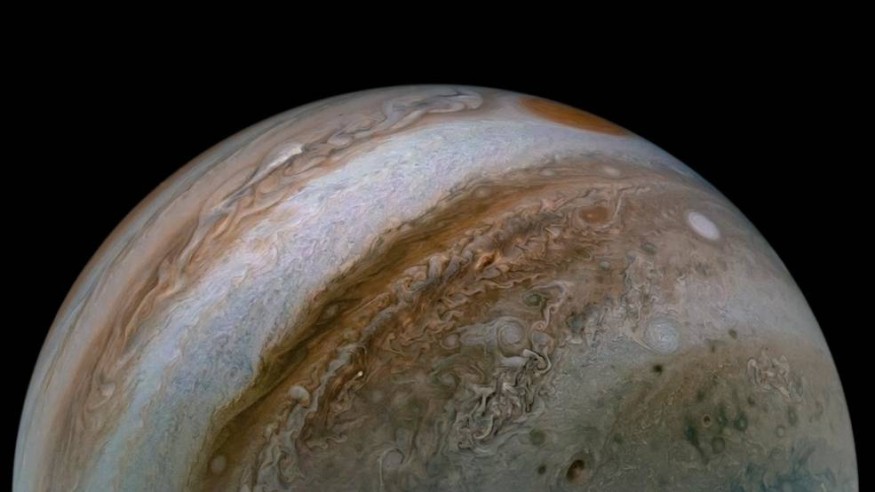In 2016, NASA's Juno space mission arrived at Jupiter after a five-year journey, carrying Junocam, a two-megapixel camera with a Kodak image sensor. This camera reveals more secrets about the planet. The evidence that JunoCam has managed to unearth since the probe reached Jupiter's orbit is summarized in a short movie embedded below.
Every Juno flyby has revealed new information about the planet. NASA and the Southwest Research Institute have made much of this information available on the mission's dedicated webpage. Astronomers may download raw data here and then process the photos themselves, interpreting colors and stitching together different photographs to send back to NASA for inclusion on the website.

NASA Shares Juno's Photographs
NASA has posted Jupiter's photographs on its official website using data provided from millions of kilometers away. The satellite photographed the dense clouds of dust mixing into one another, as well as Jupiter's famed huge red spot, which has been a raging storm for years.
Clouds & storms swirl on Jupiter. NASA, Juno Spacecraft
— Black Hole (@konstructivizm) October 20, 2021
More:https://t.co/LRcH6QnOuw pic.twitter.com/JSgWaX3LIm
Republic World said Juno, interestingly, carried two kinds of historical and educational things in addition to nine scientific instruments. The first is a plaque supplied by the Italian Space Agency, which has a photograph of Galileo and an inscription written in Galileo's own handwriting in January 1610. Three LEGO mini-figurines depicting the Roman deity Jupiter, his wife Juno, and Galileo with a telescope are also included to encourage youngsters to pursue a profession in science, technology, engineering, or mathematics (STEM).
NASA To Explain Juno's Revelation Soon
The scientists team will disclose new results that give the first 3D view at how the planet's churning atmosphere behaves underneath the top layers of clouds, NASA said in a brief statement. The space agency will also describe how these discoveries might help scientists learn more about the atmospheres of other big planets in the cosmos.
The ceremony will be broadcast live at 3 p.m. EDT on NASA TV, the NASA app, the NASA website, and the agency's social media platforms: including Twitter and YouTube. People associated with the Juno project, which is examining Jovian weather systems up close, will be present in large numbers.
About Juno Mission
Juno is currently on a quest to learn more about the giant planet, Space.com said. In August, the probe celebrated its tenth year in orbit, and it is still going strong throughout its extended mission, which NASA authorized in early 2021. However, due to Jupiter's harsh radiation environment, Juno may not make it to the end of its intended extension in 2025.
Juno's recent discoveries include the discovery of bizarre new auroras at Jupiter, fresh information about a generation-long atmospheric "hot spot" enigma, and unparalleled data about the planet's atmosphere and storms.
RELATED ARTICLE : NASA's Lucy Space Vessel Set to Obtain New Astronomical Records in Trojan Asteroid Investigation Near Jupiter
Check out more news and information on Space in Science Times.
© 2025 ScienceTimes.com All rights reserved. Do not reproduce without permission. The window to the world of Science Times.












